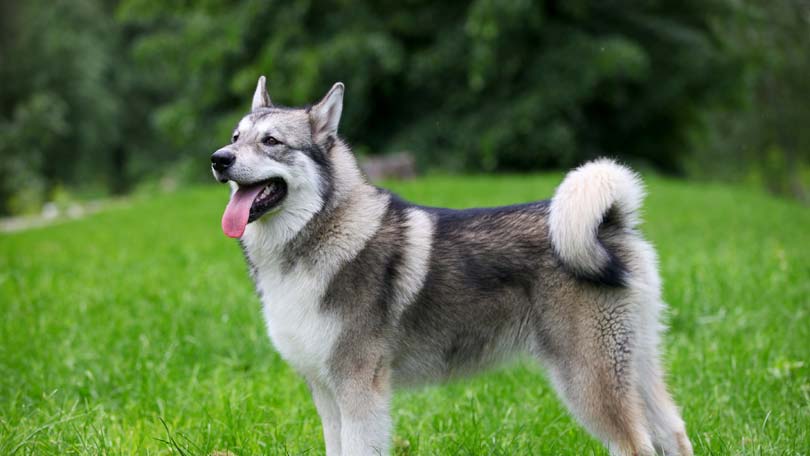
One of the first things new dog owners ask is how much exercise does a dog need. It’s a tough question to answer though as every breed of dog has different requirements and even within a breed there will be fluctuations dependent on the needs of individual dogs. Then, for some breeds such as the Labrador retriever, we talk in minimum levels of exercise required while breeds such as the Mastiff tend to be discussed in the maximum duration and intensity of exercise. Age also comes into the mix as does body condition and overall health.
There are many factors to how much exercise a dog needs starting with what breed or type of dog
Breed Type
How much exercise a dog needs varies from breed to breed. However, we can speak in general terms by using the canine categories developed by the North American kennel clubs.
Sporting Dogs – Sporting dogs include everything from the energetic Golden Retriever to the slower Clumber Spaniel. These are dogs that are happiest being mentally and physically challenged on a daily basis although the intensity of the exercise is dependent on the breed. Clumber Spaniels, for example, are bred to maintain a uniform, moderate but mile devouring pace all day and for days on end as needed. In comparison, the Nova Scotia Duck Tolling Retriever was bred to ‘toll’ or play at the side of rivers and marshes to entice ducks closer to the hunter before retrieving any fallen fowl. Although their activity is more intense then the Clumber, they were never expected to maintain the pace for an entire day or multiple days in a row. Today, in a non-hunting environment, the Clumber is happiest on long on or off-leash walks where as the Toller requires not only the long walks but also an intense game of fetch at least once a day.
Hounds – Under the umbrella of hound come two very different types of dogs – sight hounds and scent hounds. Sight hounds are your racers such as the Whippet and the Greyhound, bred for short, intense bursts of exercise followed by lounging around the castle. They are the couch potatoes of the canine world and require little exercise in comparison to many other breeds. Although they love a good sprint chasing a rabbit, they are also happy with a long leash walk daily. Scent hounds, however, are the nose-to-the-ground hunters with the endurance to last all day if necessary. They prefer a daily off-leash walk through woods or anywhere there are a lot of scents to explore and will often enjoy a game of fetch or discover the hidden treats.
Working Dogs – The working dog class cover a diverse group of dogs ranging in size, body type and ‘job’. In general, working dogs require the most amount of mental stimulation along with moderate exercise. Working dogs are intelligent and highly trainable (although one does have to consider what they were bred to do and adjust training methods accordingly). These dogs will not be happy with a daily leash walk. They want the physical challenge of playing fetch as well as the mental stimulation of, for example, tracking or doing agility. The more they are forced to think while exercising, the better it is for the dog. The exception are the Great Dane and Mastiffs who, again generally speaking, require less exercise.
Terriers – Although terriers come in two subcategories (short-legged and long-legged terriers), they all require a high level of exercise to stay healthy. These dogs are bred to go to ground after small game and as such are an extremely intense and intelligent type of dog. They require mental stimulation as much as they require physical exercise so activities such as earth dog trials, agility, tracking and fly ball are all high on a terriers list of favorites.
Toy Dogs – Toy dogs in general tend to require less exercise then other breeds. They are bred to be lap dogs and much of the drive and intensity of their full-size brethren has been bred out of them. Also, their diminutive size means that chasing a ball in the living room is considered a football field for a full-size breed. This of course is a generalization only and many toy breeds love to play with the big dogs at the dog parks.
Non-Sporting – The non-sporting group is a melting pot for all the breeds that do not fit’ under any other criteria and as such, it is difficult to generalize the required exercise of the various breeds. Breeds such as the Standard Poodle and Dalmatian require high levels of off-leash running and physical stimulation where as the Pekingese is best at low intensity, leash walking. If you have a breed or mixed breed that belongs to the non-sporting group, it is best to do some research on the history and origin of the breed and adjust the exercise level accordingly.
Herding Dogs – Herding dogs are bred to work at moderate levels of exercise from sun up to sun down. Breeds such as the German Shepherd Dog actually have a particular gait that allows them to maintain the same level of exertion mile after mile. In their country of origin, GSDs are tested before being bred that they are physically capable of maintaining that gait for a minimum of twenty kilometers. The herding breeds are also extremely intelligent and require mental stimulation need high levels of intense exercise such as playing fetch daily as well as a long leash walk to stay happy and healthy. Herding dogs excel at agility, fly ball and herding trials!
Exercise and the Life Stages of Dogs
How much exercise a dog needs also changes as they grow and mature. Puppies need short bouts of exercise depending on their breed which, as they mature and develop physically, should gradually increase in duration and intensity. Adult dogs are better at moderating their own needs and will ‘ask’ to go for a walk or play ball when they need it along with their daily walks. Seniors fluctuate depending on how they feel but in general, they do best with the same amount of exercise each day – duration, intensity and type.
There are obviously exceptions to every rule and every dog is different. Just because you have a Nova Scotia Duck Toller, a breed often described as miniature Golden Retrievers on speed does not mean that there is something wrong with your couch potato Toller. Some are naturally less active then others and have different exercise requirements. On those bleak days where the rain is pouring and the wind is up, be thankful your dog is fine with a walk around the block and pity the person with the typical Toller who is soaked through and hypothermic in comparison.
Learning to read your dog’s needs is a vital part of raising a happy and healthy pet. Every dog needs a minimum of a daily leash walk lasting for at least thirty minutes. Beyond that, ask your vet, breeder or trainer or research the breed via the internet or books.
Remember: a well-exercised dog is a happy dog and a happy dog makes for happy owners. Win-win all around!





